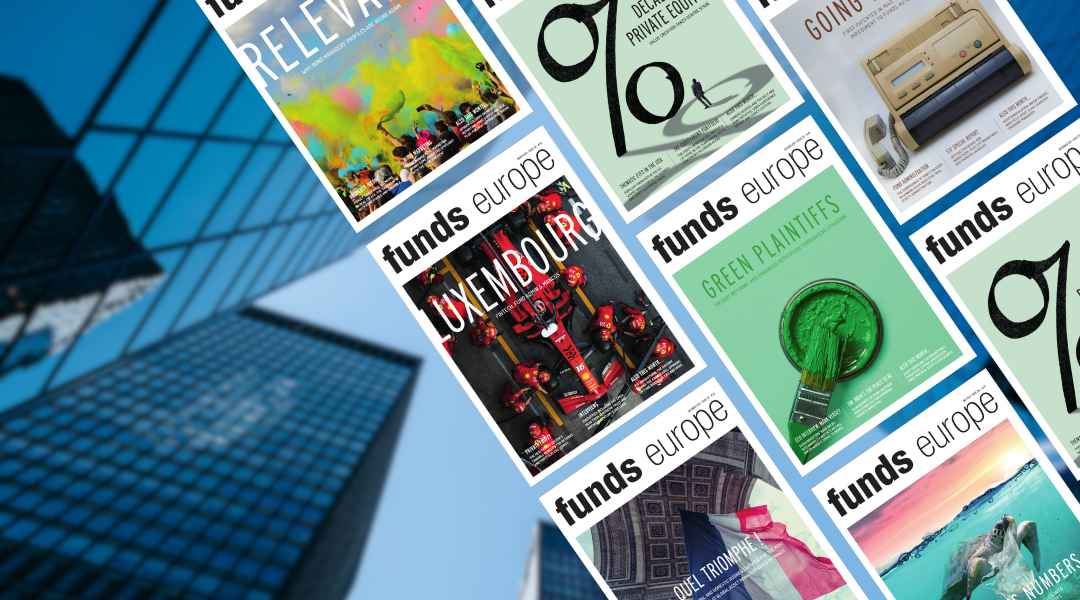 Rising inflation in Asian markets threatens the benefits of investing in these regions. Lisa Kindle reports.
After charting phenomenal and unblemished growth trajectories in 2010, Asian economies have been stymied by rising inflation in 2011, leading some investors to take their money and run to developed markets. But countries in which central banks have stopped hiking interest rates are still attractive.
Rising inflation in Asian markets threatens the benefits of investing in these regions. Lisa Kindle reports.
After charting phenomenal and unblemished growth trajectories in 2010, Asian economies have been stymied by rising inflation in 2011, leading some investors to take their money and run to developed markets. But countries in which central banks have stopped hiking interest rates are still attractive.In February, inflation hit 2.9% in Thailand, 4.5% in South Korea, 4.9% in China and a whopping 5.5% in Singapore - one of the hardest hit economies in the region.
Tim Condon, Singapore-based head of Asia research with ING Financial Markets, says: “There is a supply shock in the world economy that’s causing food prices to spike while oil prices have surged recently on the turmoil in the Middle East and North Africa. Higher commodity prices have pushed up headline inflation in much of Asia.”
As with many emerging markets, the impact of the price surges in food and energy is hitting many Asian economies harder than those in the developed world due to the higher percentage of the Consumer Price Index (CPI) basket given over to these fundamentals.
“Food would normally account for a third to nearly half of the CPI baskets in most Asian economies. In particular, economies like the Philippines and Indonesia have the greatest exposure and are not surprisingly the worst hit in terms of market performance – they are currently the worst-performing markets in the year to date,” says Gina Chan, head of absolute return and external fund manager at Singapore-based Lion Global Investors, the asset management joint venture between OCBC Bank and Great Eastern Holdings.
Likewise, economies like India and Thailand depend on crude oil imports to meet their energy requirements – and with tension in the Middle East pushing oil prices to well over $100 (€72) per barrel, the price hike has been feeding inflation.
And though core inflation across the region has up till now remained low, many Asian central banks have been moved to respond to inflation concerns by hiking interest rates.
“The issue for Asian central banks is: Are inflation expectations well enough anchored that they don’t have to respond to the gap between headline and core inflation?” says ING’s Condon. “Countries are in various places along that continuum of having a very credible central bank and very well-anchored inflation expectations, versus countries where the central bank is less credible.”
Countries that have hiked interest rates (many of them several times in fairly quick succession) in relation to inflationary concerns include China, Malaysia, Indonesia and Thailand. Most recently, in mid-March, South Korea raised its rates for the fourth time in a year by 25 basis points to 3%. Many governments, including those in Thailand, Indonesia and China have also put in place specific subsidies and price freezes, for example on fuel, in order to protect low income earners from rising food and energy prices. Market movements
In Asian stock markets meanwhile, inflation and interest rate concerns have meant that last year’s non-stop upward trend has, in cases like the aforementioned Indonesia and the Philippines, turned into a bumpy ride for investors. Some have in fact pulled out and reallocated to developed markets, where performance has been better than expected.
“In the last two months [Asian equities] have been very choppy and very affected by the macro picture,” says Lion’s Chan, who adds some mitigation against the volatility can be achieved from a move to upstream assets like oil, coal and food-producing companies.
Chan, however, insists that Lion is “still comfortable” with Asian equities, as the outlook for earnings and valuations continues to look “quite reasonable”. She adds that many of the outflows seen in Asian markets were the exit of so-called “hot money”, but that there remain “strong fundamental underpinnings for longer term inflows to the region”.
“If you think in terms of longer term drivers of asset allocation to Asia, the region is likely to sustain a higher rate of growth for some time to come, and if you look at global growth distribution, emerging markets versus developed markets, emerging markets contribute about two thirds of global growth,” she says. “I think the Asian bourses have room to deepen and grow, considering that the region’s market capitalisation to GDP ratio is still low relative to what it could be.”
Inflation, though, still remains a concern for investors and Central Banks alike for the time being.
As Anthony Michael, head of fixed income for Asia Pacific at Aberdeen Asset Management in Singapore, points out, it is effectively “the biggest policy challenge for Asia right now”.
However, he contrasts this with what he terms “the biggest challenge facing developed world policy makers in Europe, the US, Japan”, ie, the lack of growth.
Michael says: “The Asian region has some of the best structural growth, fiscal growth, current account surpluses, high personal savings rates – the macro story for Asia is very solid.” He adds that policy makers in Asia have “very effective measures” to be able to respond and cope with headline inflation like food price inflation over the short term.
“There’s also a rise in core inflation,” he continues. “But you’re seeing this is because the Asia economies work properly – the region is growing at an average of over eight percent; it’s arguably growing too fast. Some of the inflation we’re seeing is a result of pressures from incredibly strong growth in 2010.”
As Asian economies return to pre-crisis levels of growth and capacity, some of those pressures include growing labour shortages across the region, which are driving wages higher and causing increasing concern among some of the region’s economists that core inflation is on the rise. Pressure points
Lion’s Chan acknowledges core inflationary risks like this will continue to be a pressure point as the continued rampant growth maxes out capacity in many Asian countries.
“Looking longer term, structural measures such as raising labour production activity is something for Asian economies to focus on as well in order to sustain [growth] over the longer term,” she says.
Also playing a role in Asia’s inflation story will be US policy. Lai Yeu Huan, head of equity research at Singapore-based DBS Asset Management, says: “The loose monetary conditions created by the US Fed’s QE2 programme have directly contributed to the rising prices in Asia.
“Increased volatility in fund flows also continues to add to regional inflation risks, by temporarily boosting some sectors while ignoring others.” Huan points to the property sector in markets like Hong Kong, Singapore and China as an example of a market that remains hot, despite government measures from all three countries “aimed at curbing speculative demand”.
And if the US changes direction, the flip-side could be just as unpleasant for investors in Asia.
Huan says: “Should the Fed decide to drain liquidity from the system or tighten its monetary policies, we expect all the major asset classes – gold, stocks, real estate - to underperform along with some of the Asian currencies.”
Looking ahead, however, most expect inflation concerns - and the accompanying interest hikes from Asian central banks - to ease later in the year, offering investors committed to Asia’s still-compelling macro growth story some respite. Commodity inflation
Chong Jiun Yeh, deputy CIO, fixed income & structured investments, at Singapore-based UOB Asset Management, says: “I think that central banks in this part of the world may tighten a bit more in terms of interest rate risk, and may potentially allow greater appreciation in the Asian currency to manage inflation expectations and dampen the imported inflation especially for high import countries.
“But barring any tail-risk event from the Middle East, we feel inflation will probably start to taper off in the second half of this year and thus it will start to stabilise.”
He is seconded by ING’s Condon who says: “I expect my view that inflation concerns are overdone will prevail. However, I also think it will take time for people to be persuaded. I had thought it would not happen until the second half of the year, but recent food price data from India and Indonesia tells me that the worst of the food price spike is behind, which leads me think inflation concerns could soon dissipate.”
Meanwhile, he advises investors to avoid markets where central banks are still “in play” and interest rates are rising in favour of markets where central bank rate hikes are not “a threat.”
Condon says: “Hong Kong is obviously a contender because there is no central bank. Singapore is another because its central bank does not use interest rates as its monetary policy instrument. I like Indonesia and Malaysia because of my view that their central banks have finished hiking. I expect that list will grow,” he says. ©2011 funds global

 At times like these, HSBC Asset Management easily pivots towards emerging markets.
At times like these, HSBC Asset Management easily pivots towards emerging markets. A comprehensive, cost-effective, and transparent currency overlay hedging solution is crucial to mitigate FX exposure risks in the complex landscapes of Japan and China's FX markets, explains Hans Jacob Feder, PhD, global head of FX services at MUFG Investor Services.
A comprehensive, cost-effective, and transparent currency overlay hedging solution is crucial to mitigate FX exposure risks in the complex landscapes of Japan and China's FX markets, explains Hans Jacob Feder, PhD, global head of FX services at MUFG Investor Services. The world is transitioning from an era of commodity abundance to one of undersupply. Ben Ross and Tyler Rosenlicht of Cohen & Steers believe this shift may result in significant returns for commodities and resource producers over the next decade.
The world is transitioning from an era of commodity abundance to one of undersupply. Ben Ross and Tyler Rosenlicht of Cohen & Steers believe this shift may result in significant returns for commodities and resource producers over the next decade. Ross Dilkes, fixed income portfolio manager at Wellington Management, examines the opportunities and risks for bond investors presented by the region’s decarbonisation agenda.
Ross Dilkes, fixed income portfolio manager at Wellington Management, examines the opportunities and risks for bond investors presented by the region’s decarbonisation agenda. Shareholders in Japan no longer accept below-par corporate governance standards. Changes are taking place, but there are still areas for improvement, says Tetsuro Takase at SuMi Trust.
Shareholders in Japan no longer accept below-par corporate governance standards. Changes are taking place, but there are still areas for improvement, says Tetsuro Takase at SuMi Trust. Robert St Clair, head of investment strategy at Fullerton Fund Management, explores the reasons investors should be paying attention to the rising demand for healthcare in China.
Robert St Clair, head of investment strategy at Fullerton Fund Management, explores the reasons investors should be paying attention to the rising demand for healthcare in China.


